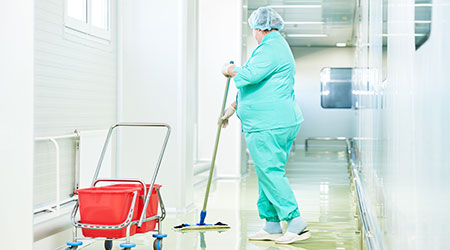Having set processes, procedures, great training and retraining, and a public health approach to cleaning is important, according to an article on the CleanLink website.
A public health approach means looking into less toxic cleaners that do not leave residues or have a lot of synthetic fragrances or dyes in them, ergonomic equipment for workers, decreasing cross-contamination, remembering indoor air quality and heading off the spread of infectious outbreaks and their symptoms every day of the year.
Infectious outbreaks happen to everyone and occur everywhere. Germs can live sometimes for weeks or months on soft and hard surfaces and even in the air. This means that anything someone touches can potentially be hazardous to public health if it is not cleaned and sanitized or disinfected correctly.
Cleaning for infection control means cleaning and removing soils and germs or possible pathogens. Then it's killing what is left. Infection control even includes hazards, toxicity, air quality, time and efficacy, cost and return on investment.

 Why Identity Governance Is Becoming a Facilities Management Issue
Why Identity Governance Is Becoming a Facilities Management Issue Habitat Health Opens South Los Angeles PACE Center
Habitat Health Opens South Los Angeles PACE Center Denton County MHMR Center Suffers a Data Breach
Denton County MHMR Center Suffers a Data Breach What Every EVS Leader Needs To Know
What Every EVS Leader Needs To Know Blackbird Health Opens New Clinic in New Jersey
Blackbird Health Opens New Clinic in New Jersey